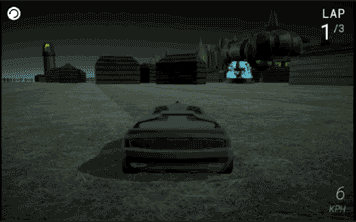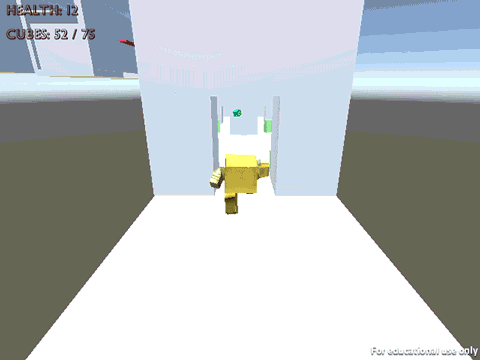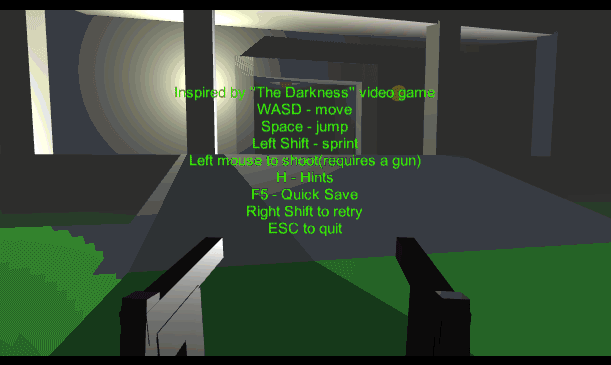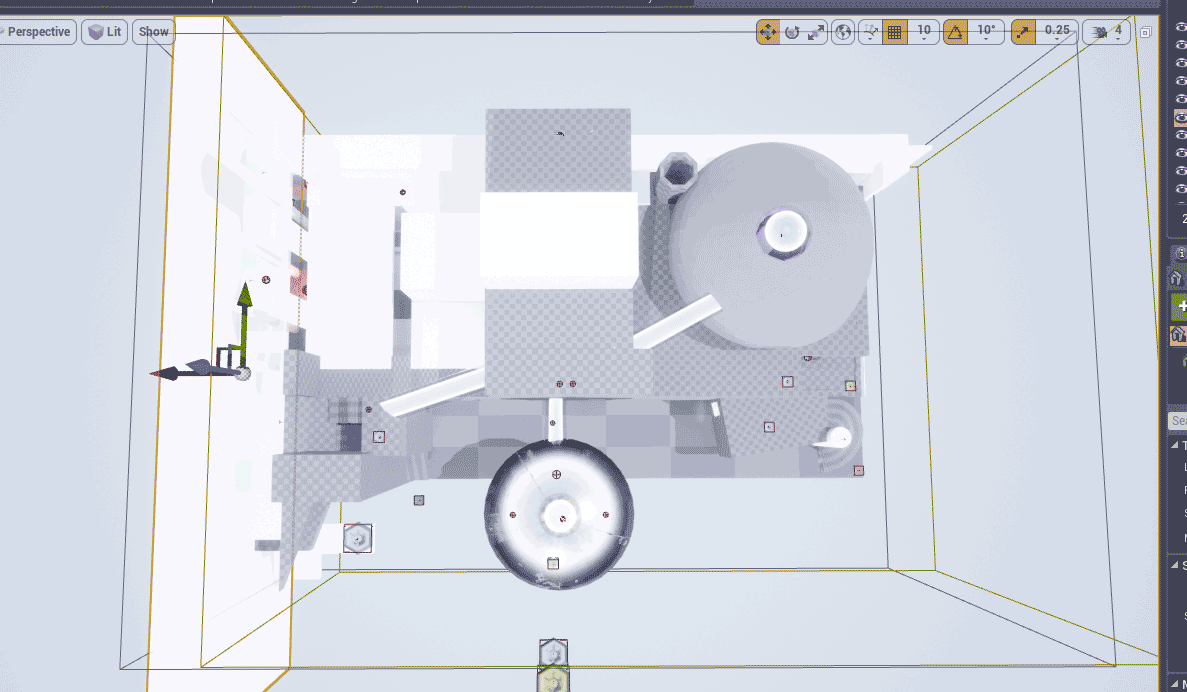Game Design/Development
Overview: A racetrack built through a coastal city and the nearby mountain.
Context: Made with Unity's default asset car/scripts. Had to feature branching pathways and allow basic mastery by the third lap.
Role: made with one partner. I made some of the major complex track pieces and car values, he made the general terrain layout.
Design decisions:
-
Originally based off Star Wars' Endor, the level now uses Unity's terrain editor for much of the track. The structures we made for the original version of the track were integrated into the newer version. The goal of this project was learn modularity in level design.
-
I learned that the terrain editor should not be trusted to make smooth ramps. Every time we wanted a ramp, it had to be a model or else the car would get caught on it.
-
I played around with the values of the car. My goal was to make sure the car controls felt solid before we started designing the level. I severely limited the turn speed of the car so that the player couldn’t over steer and spin out of control. The limitation was inspired by the way I play MarioKart. I pick vehicles with 80% steering. Too much more than that and I over correct, too much less and I can never make it around corners. MarioKart is the only game I enjoy driving in because I can drive at full speed and still comfortably take every turn. I was trying to mimic that comfort with this project and allow players to spend their time racing instead of spinning out.
-
Some of the values include level of torque for the wheels, whether its 4 wheel drive, front wheel, or back wheel, the strength of the brakes, the weight of the vehicle, the position of the car's center of gravity
-
I created a respawn system and a jump pad launcher. If the car enters a respawn plane, they are teleported to the beginning of the stretch. If they enter a jump pad, their velocity is set to a desired amount. The former allows more dangerous, challenging and thus interesting sections of roadway. The latter allowed spectacular jumps that could reliably get cars form A to B even if players don't have a fast enough run-up. This was only available in the earlier version, as the dramatic change of speed looked very unnatural and jarring.
Arcade racer level

The map takes place during dusk and thus seems darker than it needs to be.
Levels
Overview: A linear 3D platformer. Red means injurous platform, tall green bricks are enemies, tiny rotated bricks are coins, blue can be grabbed and moved. Small objects can be picked up.
Context: Built the level using "Complete Physics Platformer Kit." No additional coding was done. Meant to invoke a state of "flow."
Role: Single person project
Design Decisions:
-
Follows the design philosophy where attainable platforms are roughly 50% of the player's jump height, and unattainable platforms are roughly 150% of the player's jump height.
-
The level starts off with the player facing the only open direction that can travel in. There is no danger. There is only open space. The learned movement controls.
-
After some running they encounter a bar that stops them from running. They must jump over it to continue. The bar is diagonal so the slide off if they don't jump over it perfectly. The run some more and and counter another bar. After that jump, they run a much shorter distance and jump again. The landing area has a bar immediately after to prompt an instinctive button press. If done correctly, the player will bounce much higher over the second bar and learn about subsequent jumps.
-
Then they encounter a blue wall that can be grabbed and moved so they can continue. This is necessary to traverse gaps in the level later on.
Boxy based platform level

This gif shows the last part of the track, where players have obtained some level of mastery over the jump mechanics.
Overview: An FPS level in Unity inspired by The Darkness 2. Features a basic environmental puzzle.
The player has 2 submachine guns to destroy lights, and obtains additional powers part way through the level. The additional powers only work in the dark, which requires players to shoot out the lights. Between the guns and the darkness powers, players attempt to navigate the house.
Context: The first iteration was to make a puzzle level where light guided and affected the player. The second iteration only required sound to be added (using FMOD).
Role: Other than using the default Unity FPS helper, all programming was me. I sourced half of the sound online, created some in class and did my own voice acting.
Design Decisions:
-
Better game design in the second version. Instead of giving players The Darkness immediately, I gave them guns. This allowed more experimentation with shooting the lights - something most playtesters of the first didn't realize. The puzzles remained the same (using guns to break a yellow door and then the Darkness to move a purple one) but the positioning, pacing, and tutorial text were much clearer in the second version.
-
Having sound vastly improved the game. While in both cases light prevented using their Darkness powers, having a voice tell them to avoid the lights was a much clearer explanation.
-
Lighting in Unity is not great. FMOD can be deeply frustrating. Some of this required experimentation and research to improve. The information I found from most FMOD help was out of date, so that made things difficult.
Darkness 2 based level

Overview: A Capture the Flag map for Unreal Tournament 4 inspired by an area of Sherian. I will upload gameplay once I have access to PC that can run UT4.
Context: It was a project for Level Design. A level for the UT4 beta. Meant for a 3v3 match. Probably better for 8v8.
Role: Single person job
Design Decisions:
-
A larger map designed with the telepositioner disc in mind. The disc can be shot up to 5 character heights high, so the level feels very tall.
-
The level is roughly symmetrical for use of space, but is generally lopsided for actual movement. The left side has more direct pathways while the right side requires more backtracking.
-
Used using BSP brushes and basic objects. The brushes are for additive and subtractive room creation. The basic objects I didn't need that complexity. The editor started to lag on my top-of-the-line rig when made 100% with the BSP brushes. The basic ones also allowed for cool materials (like glass). I added colored lights to make each base feel more unique.
-
I will upload the documentation I made for this soon.
Unreal Tournament level
